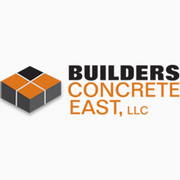Concrete Experts Answer 4 FAQs About Heated Driveways

While a heated driveway is a major investment for homeowners, the benefits make it a desirable amenity in the midst of winter. Installing a full heating system allows you to avoid the hazards of an icy driveway, without having to pick up a shovel or a snow blower. Here, Builder’s Concrete East, in Windham, CT, will answer all your frequently asked questions about heated driveways, so you fully understand the benefits and the process.
FAQS About Heated Driveways
How Do Snow Melting Systems Work?
Radiant heat systems consist of three main components: a heat cable, a snow sensor, and a master control unit. The snow sensor detects moisture and temperatures below a set point and then signals the controller. The control unit then sends power to the heat cable to warm the surface and prevent snow buildup. It then deactivates when the melting is completed.
What Types of Surfaces Can Snow Melting Systems Be Installed In?
Snow melting systems can be installed in most surfaces, including concrete, stamped concrete, asphalt, and under pavers.
 Are Snow Melting Systems Automatically or Manually Activated?
Are Snow Melting Systems Automatically or Manually Activated?
Snow melting systems will automatically turn on when the temperature drops below a set point and there is moisture on the sensor.
Are Heating Systems Harmful to Driveways?
Unlike traditional methods of snow removal, heated driveways are better for your property. Using salt or chemicals to melt snow can damage the driveway, thus reducing the lifespan and durability of the concrete. Salt products can also damage your plants and lawn.
If you are planning on installing a full heated driveway, you can depend on Builder’s Concrete East for your concrete supply. Call (860) 456-4111 today to speak with a professional and receive a free estimate, or visit their website for a comprehensive list of specialty concrete mixes.
About the Business
Have a question? Ask the experts!
Send your question

